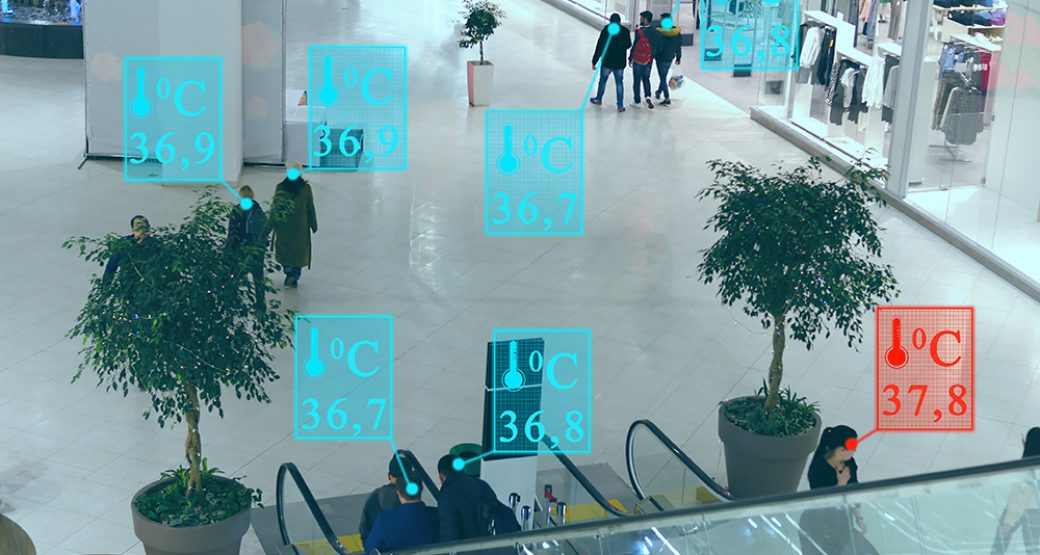Human temperature detection devices can play a significant role in reducing COVID-19 infections in workplaces. After all, one of the key symptoms of COVID-19 infection is fever or increased body temperature.
Some businesses have already started installing human temperature detection devices to ensure the safety of their employees. Have you?
Is Temperature Scanning a Foolproof Method to Detect COVID-19?
Temperate scanning is not a foolproof method for detecting COVID-19; however, it is non-invasive and provides instant results. Per a medical report based on 55,924 confirmed cases of COVID-19, almost 88% of patients had a fever. Therefore, temperature scanning can be a useful method to detect temperature (a primary symptom in COVID-19) and mitigate the risk of the infection spreading in your workplace.
It is important to understand that human temperature detection devices are not medical solutions. They cannot identify the virus; however, they can detect a potential marker of the COVID-19 infection and prevent it from entering or spreading in the organization.
How Can Human Temperature Detection Devices Help?
Temperature detection devices such as thermal scanners, thermal cameras, and non-contact infrared thermometers can instantly and accurately detect elevated temperatures in employees. These devices can serve as an additional layer of protection for businesses to guard their facilities against the deadly coronavirus. Based on the results, businesses can request employees to work from home and self-isolate for at least 14 days before turning to the workplace.
Most of the temperature detection devices use radiometric thermal cameras to measure temperature variations in people entering the field of view (FOV). Advanced temperature detection solutions comprise blackbody devices to measure temperature. Some devices even combine facial detection and thermal cameras to generate accurate results.
How to Implement Temperature Scanning in the Workplace?
To conduct temperature scanning safely, accurately, and systematically, ensure you adopt the following protocol:
- Hire a third-party service to conduct temperature screening on employees. If that is not a budget-friendly solution, ensure the concerned person in your staff is thoroughly trained to operate the temperature detection device. In addition, these professionals will ensure the environment is appropriate to conduct temperature screening.
- Provide the staff member conducting temperature screening with protective equipment, such as a mask, a pair of surgical gloves, a lab coat, and an alcohol-based hand sanitizer.
- Seek employee consent before measuring their temperature. If an employee does not agree to be scanned, request them to work from home and do not allow them to enter the workplace premises.
- Ask employees with normal body temperature if they are suffering from any cold or flu-like symptoms, such as cold, sore throat, headache, chills, and body ache. Fever is not a necessary marker of the COVID-19 infection.
- Do not record the temperature screening results for any other purpose apart from determining if the employee should be allowed to enter the workplace premises.
Should You Invest in Human Temperature Detection Devices?
All in all, human temperature detection devices can be a good starting point for workplace safety in the current scenario. Temperature scanning devices are simply the “first line of defense.” Temperature scanning is a reasonable method to protect your workplace from a potential COVID-19 outbreak. Nevertheless, each business’s requirements can be different and we recommend consulting professionals to find the best human temperature detection devices for your workplace.
At ProTech Security, we have a strong history of experience, innovation, and customer service. The ProTech Security Advantage is more than 35 years of service in Northeast Ohio and a strong commitment to providing quality, cost-effective protection for homes, businesses, educational institutions, and government facilities. To see what ProTech Security can do for you, contact us today.



